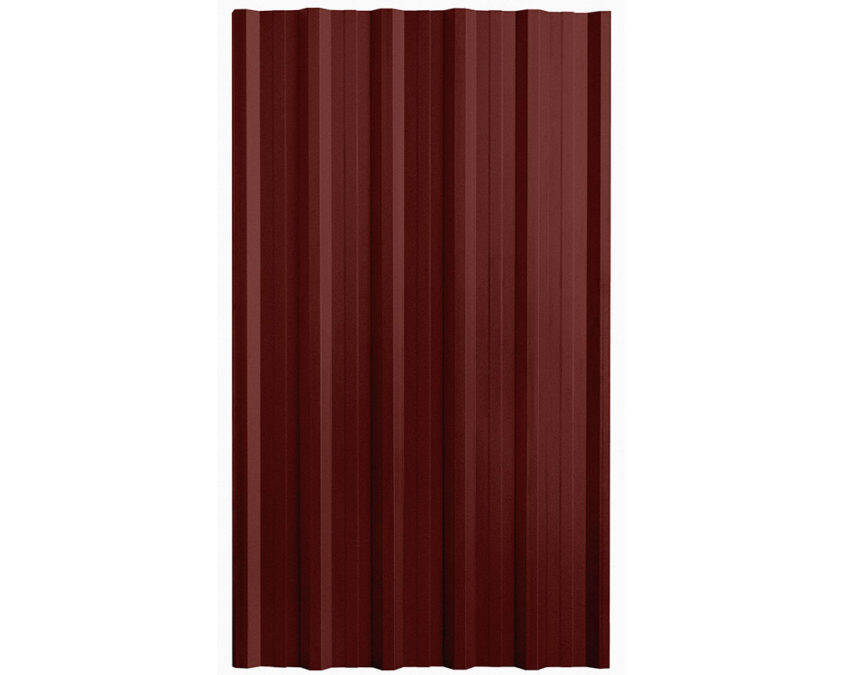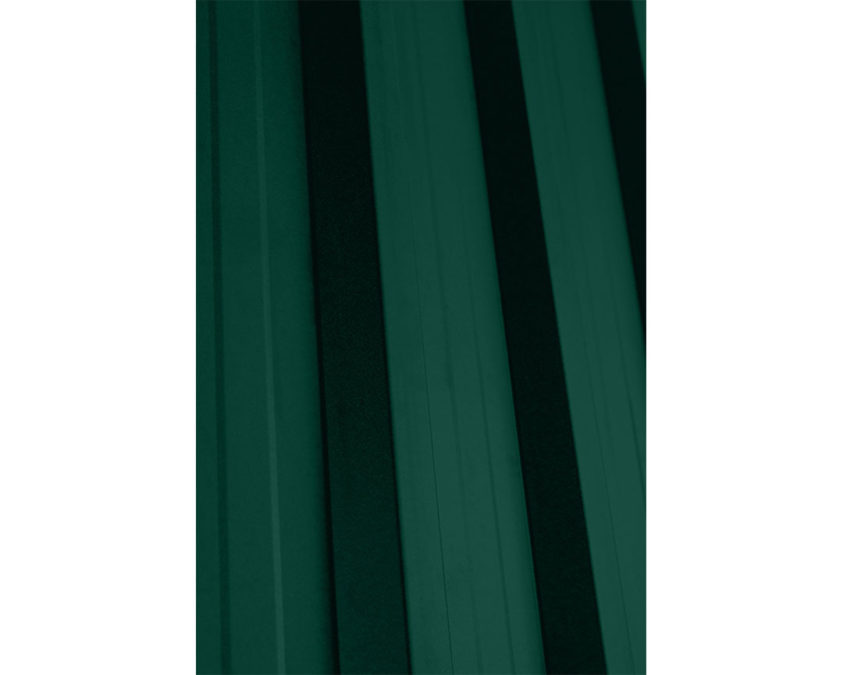The metal tile is made of hot-dip galvanized metal covered with a multilayer bilateral polymeric protective covering. Consider in more detail the production process, metal structure and types of coatings. Cold-rolled steel sheet with a high degree of ductility is galvanized by immersion in a container with boiling zinc (hot-dip galvanizing), then applied on both sides at least 3 layers: passive anti-corrosion layer, a layer of primer and polymer coating. The layer of polymer coating is the most important because it gives the metal the appropriate color and structure (on the outside, on the inside – a protective polymer coating of smaller thickness, neutral color) and in direct contact with external factors.
Consider the types of polymer coating:
Glossy polyester – a polymer coating based on polyester paint. Characteristics: resistance of color, to action of corrosion and ultraviolet radiation, approaches various climatic conditions, maintains temperature difference from -60 to + 120oC. The thickness of the coating is 25 microns, of which polyester – 20 microns, primer – 5 microns. Requires care during delivery and installation, as careless handling can cause scratches and damage to the coating. The texture of the surface with this coating is smooth and shiny.
Matte coarse-grained polyester is a type of polyester coating that is processed at a certain stage of production, during which the coating acquires a matte structure, velvety appearance, deeper color, which becomes similar to clay tiles. The coating thickness is 35 microns, it is characterized by higher resistance to mechanical damage to the surface and the influence of sunlight on the color.
Double-sided polymer coating – a coating identical to glossy polyester, in which the polymer coating is applied on both sides of a steel sheet of the same color and thickness. This feature is very important when building fences that look equally good on both sides.
It should be remembered that the service life of metal products will be as long as possible if: the product was not mechanically or chemically damaged during loading, unloading, delivery and installation; during storage and operation, the lower and upper parts of the metal must be ventilated to prevent condensation; service life is also significantly reduced if metal products come into contact with aggressive atmospheric or chemical environments (salty sea air, acid rain near large chemical plants, cement dust, bird droppings, etc.).









































